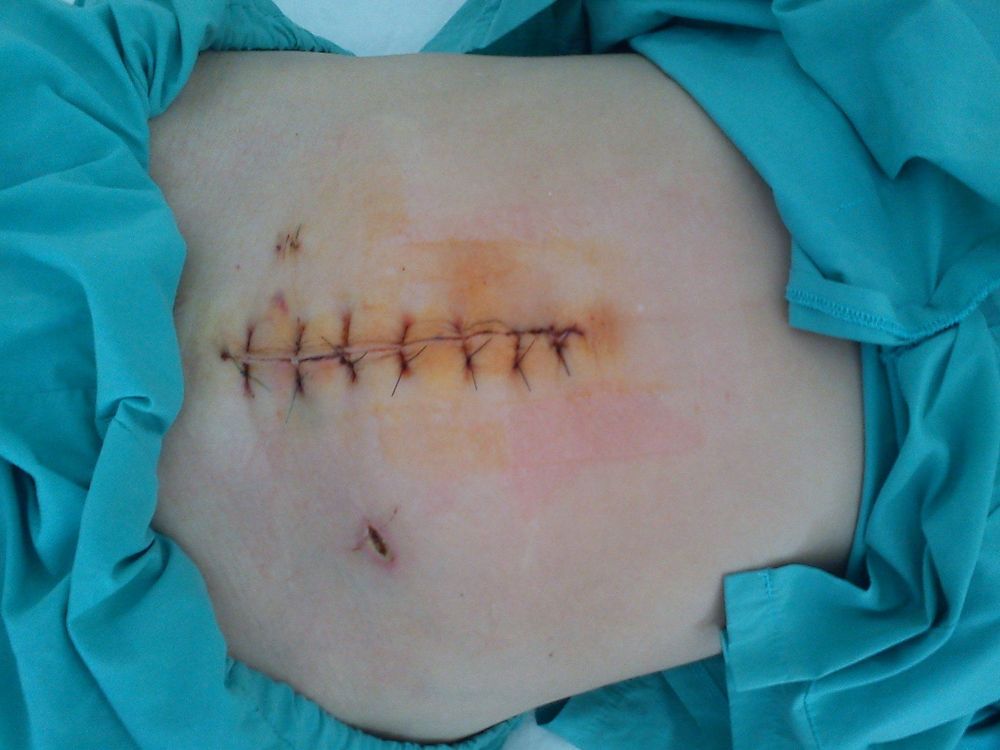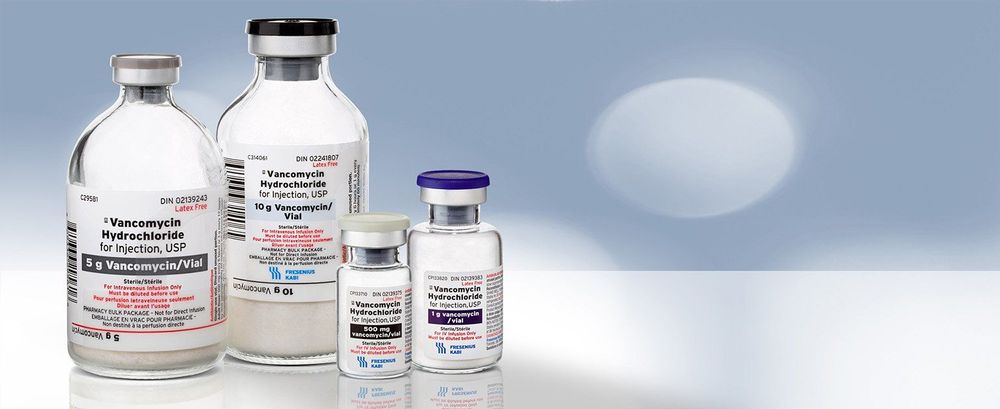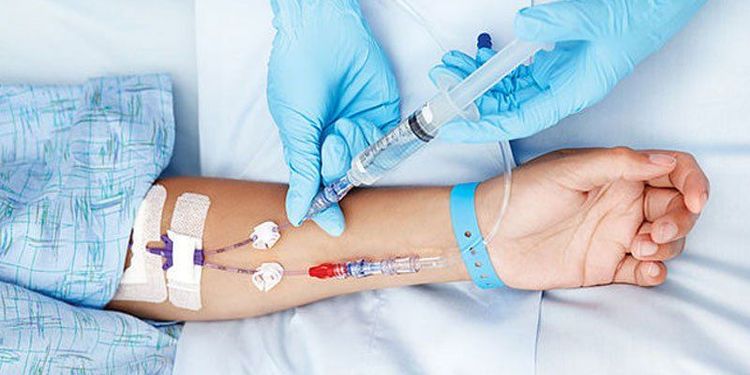This is an automatically translated article.
Intraoperative antibiotic prophylaxis is defined as the use of antibiotics to prevent infection at the surgical site. This has become the standard of care for infected wound surgery and clean surgery as well as for aseptic surgery where the placement of artificial devices is involved.
1. What is prophylactic antibiotics in surgery?
Wound infection is the most common nosocomial infection in postoperative patients in particular and surgical patients in general. This consequence leads to increased antibiotic use, increased costs, and longer hospital stays. Accordingly, when given prophylaxis with appropriate antibiotics can reduce the risk of wound infection after surgery. However, this, if not done carefully, can increase the risk of antibiotic resistance in the future. Therefore, the careful use of antibiotics in the hospital environment is very necessary, especially before surgery and procedures.
Intraoperative antibiotic prophylaxis is defined as the use of antibiotics to prevent infection at the surgical site. This concept must be clearly distinguished from the use of antibiotics before treating an early infection, such as surgery for ruptured appendicitis, although the infection may remain clinically unclear.

Hình ảnh nhiễm trùng vết mổ
When performing preoperative infection prevention with antibiotics, the following principles should be followed:
Decide whether prophylactic treatment is appropriate or not Determine the epidemiology of the bacterial flora likely to cause infection postoperatively Choose an antibiotic with the minimum antimicrobial spectrum required Choose a reasonably priced drug among those with similar antibacterial spectrum and similar efficacy or toxicity Use the right antibiotic at the right time Use the antibiotic for a short period of time such as one dose if surgery lasts four hours or less Avoid antibiotics as part of a sepsis regimen Do not use prophylactic antibiotics to correct inadequate surgical techniques Make sure to regularly evaluate antibiotic prophylaxis regimens in the hospital's epidemiological environment
2. Indications for antibiotic prophylaxis in surgery and procedures
The recommended level of indication for antibiotic prophylaxis in surgery and procedures depends on their potential risk classification for infectious complications. Accordingly, this risk will depend on the nature of the surgery or procedure such as:
Surgery, clean procedure Surgery, clean procedure but risk of infection Surgery, contaminated procedure Based on classifications In this regard, the indications for antibiotic prophylaxis should be routinely applied to clean or contaminated surgeries and procedures, but there is a risk of infection. Less acceptable indications for antibiotic prophylaxis are clean surgery such as neurosurgery, open heart surgery, and ophthalmic surgery, except when the patient has concomitant immunodeficiency or Consequences of infection will be extremely serious complications if it occurs.

Phẫu thuật thủ thuật được chỉ định dùng kháng sinh
3. How to choose antibiotics for prophylaxis in surgery and procedures
The choice of antibiotic for prophylaxis is based on several factors. In this regard, always ask the patient about a history of prior antibiotic allergy, as beta-lactams are the most common antibiotics used in prophylactic treatment. A history of severe penicillin allergy with symptoms of anaphylaxis and angioedema also means that cephalosporins are also contraindicated despite the small but severe risk of cross-reactivity.
The most important factor is that the antibiotic must have a spectrum of action against the bacteria most likely to cause the infection. Most infections that occur in the postoperative period are caused by the local flora of the patient's own body. Accordingly, it is necessary to choose an antibiotic with the narrowest antibacterial spectrum needed. This will help reduce the risk of multidrug-resistant pathogens and also because broad-spectrum antibiotics can be used later if the patient has an actual sepsis.
Therefore, third-generation cephalosporins such as ceftriaxone and cefotaxime should be avoided for preoperative prophylaxis. Instead, commonly used prophylactic antibiotics include: 1st-generation Cephalosporins, intravenously: cephazoline or cephalothin Gentamicin, intravenous metronidazole, intravenous injection or direct injection colon (if anaerobic infection is likely) Tinidazole, orally (if anaerobic infection is likely) Flucloxacillin, intravenously (if possible methicillin-susceptible staphylococcal infection) Vancomycin, parenteral intravenous (if methicillin-resistant staphylococcal infection is likely)

Kháng sinh Vancomycin dạng tiêm
4. How and when to use prophylactic antibiotics in surgery and procedures
Prophylactic antibiotics are usually given intravenously as a bolus at the time of induction of anesthesia to ensure adequate tissue concentration at the start of surgery. The timing of this dosing is particularly important for most beta-lactams with relatively short half-lives. The exception for vancomycin is that it must be infused over an hour, so it must be started earlier so that the end of the infusion will be just before anesthesia.
Intramuscular antibiotics are less commonly used than intravenous antibiotics. They are also often performed at the appropriate time to achieve the highest tissue concentrations at the time of surgical skin incision.
For antibiotics administered orally or rectally, the patient should be prescribed these drugs at an earlier time to ensure adequate tissue concentrations right from the start of the surgical procedure. Metronidazole suppositories are commonly used in intestinal surgery and must be taken 2 to 4 hours before starting. ]
Meanwhile, topical antibiotics are not recommended, except for ophthalmic or plastic surgery in burns.

Kháng sinh dự phòng được dùng qua đường tiêm tĩnh mạch
5. Time to use prophylactic antibiotics in surgery and procedures
The expected length of surgery, along with the stability of the antibiotic concentration in the tissue during the surgery and the recovery of normal physiology after anesthesia, will determine the duration of antibiotic prophylaxis.
If surgery lasts about four hours or less, a single dose of prophylactic antibiotics is sufficient. Conversely, in surgeries lasting more than four hours, additional doses of antibiotics may be needed to maintain concentrations, especially if antibiotics with a short half-life are used.
Not only that, it is necessary to evaluate the continuation of antibiotic prophylaxis until the surgical drainage has been completely removed, i.e. until complete closure of the incision can be made without sequelae. .
In conclusion, intraoperative antibiotic prophylaxis is an effective management strategy to reduce postoperative infection and improve surgical prognosis for patients. In order to do so, the implementation of antibiotics should be considered with appropriate selection, at the right time with a reasonable route of administration, to ensure the ability to fight infection safely during surgery.
Please dial HOTLINE for more information or register for an appointment HERE. Download MyVinmec app to make appointments faster and to manage your bookings easily.
References: ashp.org, aafp.org













